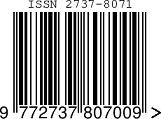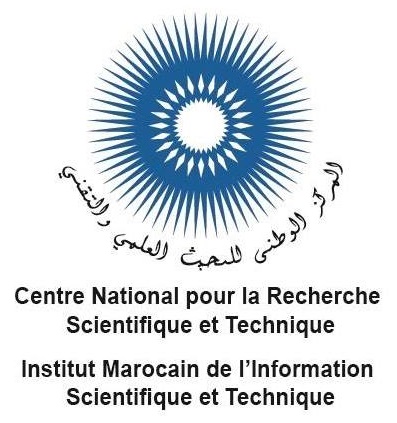Machine Learning-based Linear regression way to deal with making data science model for checking the sufficiency of night curfew in Maharashtra, India
Keywords:
Artificial Intelligence, Covid-19, Linear Regression, Machine Learning, Night Curfew, T-testAbstract
The birthplace of the novel Covid-19 sickness or COVID-19 began its spread around Wuhan city, China. The spread of this novel infection sickness began toward the start of December 2019. The Covid-19 illness spreads from one individual to another through hacking, sniffling, etc. To stop the spreading of the novel Covid-19 infection the distinctive nation has presented diverse strategies. Some regularly utilized methods are lockdown, night curfew, etc. The fundamental intention of the systems was to stop the social events and leaving homes without serious issues. Utilizing a diverse system Covid-19 first stage can address for saving individuals. Presently the second influx of this novel Covid illness has begun its top from the mid of April-May. The second convergence of this novel Covid disorder flooded all through the world and in India too. To stop the spread of this novel Covid sickness India's richest state Maharashtra government constrained the decision of night curfew. In this paper, we are taking as a relevant examination the night curfew on a schedule of Maharashtra. Here, we study that this system may or may not be able to stop the spread of pandemics.
We are using the Machine learning(ML) approach to managing regulate study this case. ML has various systems yet among all of those here we use Linear Regression for the current circumstance. The reproduced insight that readies the plan orchestrated to learn with no other person. Linear Regression is the affirmed strategy for looking over the connection between two sections. Between the two segments, one is astute and another is a seen variable.
Downloads
References
“Coronavirus disease (COVID-19).” https://www.who.int/emergencies/diseases/novel-coronavirus-2019 (accessed Apr. 28, 2021).
S. J. Fong, N. Dey, and J. Chaki, “An Introduction to COVID-19,” in SpringerBriefs in Applied Sciences and Technology, Springer, 2021, pp. 1–22.
“Coronavirus Second Wave: India Likely to Witness 2,320 Daily Deaths by First Week of June, Says Report.” https://www.india.com/news/india/coronavirus-second-wave-india-likely-to-witness-2320-daily-deaths-by-first-week-of-june-says-report-4589701/ (accessed Apr. 29, 2021).
S. Gupta et al., “Modelling the steel microstructure knowledge for in-silico recognition of phases using machine learning,” Mater. Chem. Phys., vol. 252, p. 123286, 2020, doi: 10.1016/j.matchemphys.2020.123286.
S. Gupta, J. Sarkar, M. Kundu, N. R. Bandyopadhyay, and S. Ganguly, “Automatic recognition of SEM microstructure and phases of steel using LBP and random decision forest operator,” Meas. J. Int. Meas. Confed., vol. 151, p. 107224, 2020, doi: 10.1016/j.measurement.2019.107224.
Y. Xu, Y. Zhou, P. Sekula, and L. Ding, “Machine learning in construction: From shallow to deep learning,” Dev. Built Environ., vol. 6, no. April 2020, p. 100045, 2021, doi: 10.1016/j.dibe.2021.100045.
T. Shaikhina, D. Lowe, S. Daga, D. Briggs, R. Higgins, and N. Khovanova, “Machine learning for predictive modelling based on small data in biomedical engineering,” IFAC-PapersOnLine, vol. 28, no. 20, pp. 469–474, 2015, doi: 10.1016/j.ifacol.2015.10.185.
N. J. Nilsson, “INTRODUCTION TO MACHINE LEARNING AN EARLY DRAFT OF A PROPOSED TEXTBOOK,” 1998.
“Linear Regression — Detailed View | by Saishruthi Swaminathan | Towards Data Science.” https://towardsdatascience.com/linear-regression-detailed-view-ea73175f6e86 (accessed Mar. 29, 2021).
“Linear Regression for Machine Learning.” https://machinelearningmastery.com/linear-regression-for-machine-learning/ (accessed Mar. 30, 2021).
“What is Linear Regression? - Statistics Solutions.” https://www.statisticssolutions.com/what-is-linear-regression/?__cf_chl_jschl_tk__=7bd3a54a4d331ec27e296d2958643e2fa17f2398-1617019588-0-Af4AfdSTfkSSGpJBlZBDtf_Pv7jwKRkgOm9WqOxvAYdDp7lz2-YmM8fnmNcyvTqNJpCFLQY_sAOkxp9wXCUVCSZQWeBP37raUNThGUBN0DTJXCaBtDPhTQ (accessed Mar. 29, 2021).
H. M. Thippeswamy, M. Nanditha Kumar, M. Girish, S. N. Prashanth, and R. Shanbhog, “Linear regression approach for predicting fluoride concentrations in maternal serum, urine and cord blood of pregnant women consuming fluoride containing drinking water,” Clin. Epidemiol. Glob. Heal., vol. 10, no. December 2020, p. 100685, 2021, doi: 10.1016/j.cegh.2020.100685.
“COVID19-India API | api.” https://api.covid19india.org/ (accessed Mar. 30, 2021).
“Linear Regression: Simple Steps, Video. Find Equation, Coefficient, Slope - Statistics How To.” https://www.statisticshowto.com/probability-and-statistics/regression-analysis/find-a-linear-regression-equation/ (accessed Mar. 30, 2021).
S. Thiangchanta and C. Chaichana, “The multiple linear regression models of heat load for air-conditioned room,” Energy Reports, vol. 6, pp. 972–977, 2020, doi: 10.1016/j.egyr.2020.11.090.
“COVID-19 in Maharashtra: Night curfew in state from March 28.” https://www.businesstoday.in/latest/trends/covid-19-in-maharashtra-night-curfew-in-state-from-march-28/story/435026.html (accessed Apr. 29, 2021).
C. A. Markowski and E. P. Markowski, “Conditions for the effectiveness of a preliminary test of variance,” Am. Stat., vol. 44, no. 4, pp. 322–326, 1990, doi: 10.1080/00031305.1990.10475752.
M. Fritz and P. D. Berger, “Comparing two designs (or anything else!) using paired sample T-tests,” Improv. User Exp. Through Pract. Data Anal., no. 1993, pp. 71–89, 2015, doi: 10.1016/b978-0-12-800635-1.00003-3.
N. R. Kocherlakota, “Analytical formulae for accurately sized t-tests in the single instrument case,” Econ. Lett., vol. 189, p. 109053, 2020, doi: 10.1016/j.econlet.2020.109053.
T. Rietveld and R. van Hout, “The paired t test and beyond: Recommendations for testing the central tendencies of two paired samples in research on speech, language and hearing pathology,” J. Commun. Disord., vol. 69, pp. 44–57, 2017, doi: 10.1016/j.jcomdis.2017.07.002.
“t-Test: Paired Two Sample for Means | solver.” https://www.solver.com/t-test-paired-two-sample-means (accessed Mar. 29, 2021).
Downloads
Published
How to Cite
Issue
Section
License
Copyright (c) 2021 Subham Panda, Anup Das, Ayan Kumar Ghosh, Uttam Dey, Subir Gupta

This work is licensed under a Creative Commons Attribution 4.0 International License.
Copyright on any article in the International Journal of Engineering and Applied Physics is retained by the author(s) under the Creative Commons license, which permits unrestricted use, distribution, and reproduction provided the original work is properly cited.
License agreement
Authors grant IJEAP a license to publish the article and identify IJEAP as the original publisher.
Authors also grant any third party the right to use, distribute and reproduce the article in any medium, provided the original work is properly cited.
Most read articles by the same author(s)
- Sohom Bhattacharya, Shubham Bhattacharjee, Anup Das, Anirban Mitra , Ishita Bhattacharya , Subir Gupta, Machine learning-based Naive Bayes approach for divulgence of Spam Comment in Youtube station , International Journal of Engineering and Applied Physics: Vol. 1 No. 3: September 2021















